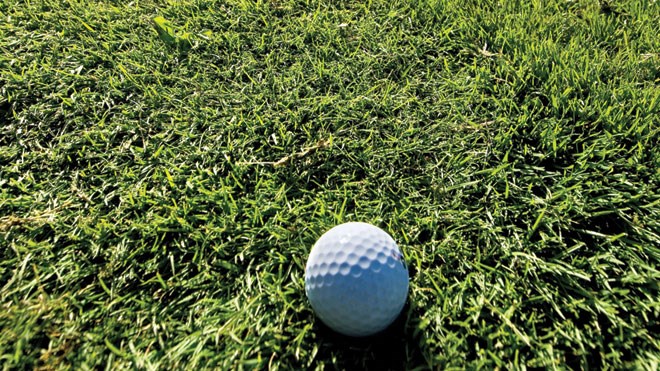A very common question I get asked by golfers of all abilities is how to get spin on the ball and make it stop on the green from inside 50 yards.
These are your scoring shots and being able to do this consistently will help lower scores in a hurry! There are numerous factors such as the type and length of grass you are playing from, the grooves on your clubs must be clean, and the type of golf ball you are playing, to name a few.
It is friction between the clubface and the ball as it is struck that causes spin. If you are playing out of the rough or on fairways that are not tightly mown, the longer grass will get between the grooves on the club head and the ball diminishing friction and thus spin. This is commonly known as a flyer.
Same goes with grooves that are full of dirt and grass. The ball with less spin will land in front or on the green and roll off the back. A lot of high to medium handicap players have trouble with pitch shots off shorter grass.
The reason for this is their swing plane is typically much too steep with all of their swings, making it very difficult to get under and through the shot correctly.
They feel they have more success with the ball sitting up in longer grass, but this is not conducive to spinning the ball very well. To exacerbate this problem, because of the lack of spin these golfers will begin to play the ball too far back in their stance and hit violently down on the ball thinking this will add spin.
All this does is cause the ball to launch very low with little spin, so the ball continues to run off the back of the green. The true fix for improved contact and increased spin for this golfer, is to shallow out the swing plane, which helps the club and the ball to interact correctly resulting in more solid shots everywhere on the course, including pitching.
The data that Trackman produces, shows us that an effectively hit sand wedge from 50 yards will launch at approximately 30 degrees with 8,000 rpm of spin. To achieve this, the ball should be placed three inches inside your front heel.
Your stance will be slightly narrower than normal. The narrower stance will produce a more forward centre of gravity. This will cause your hands to come through the hitting area more ahead of the club head than normal.
This will result in a forward shaft lean of approximately 10 degrees. Thus, you will be hitting the ball first before the ground with the club still descending slightly with an attack angle of about five degrees. You should only be scarring the grass after making contact with the ball.
Another good thought is that you want to make contact with the ball two or three grooves lower than the middle of the clubface. Due to the gear effect, this will impart more spin on the ball. The ball will fly fairly low but with plenty of spin so it will land on the green and check, and hopefully settle close to the pin.
The last point I will add is never try to help any shot into the air. Only in special cases will the club head be passing your hands through impact. In the case of pitching, having this happen will certainly lead to the dreaded skulled shot that sails over the green into the rhubarb. Allow the proper technique and the loft of the club to get the ball in the air. Enjoy the 2016 golf season.
Tom Clark is the director of instruction at Timberwolf Academy and is Level 2 Trackman Certified. For more information, visit timberwolfgolfacademy.com.
Join Sudbury.com+
- Messages
- Post a Listing
- Your Listings
- Your Profile
- Your Subscriptions
- Your Likes
- Your Business
- Support Local News
- Payment History
Sudbury.com+ members
Already a +member?
Not a +member?
Sign up for a Sudbury.com+ account for instant access to upcoming contests, local offers, auctions and so much more.
